Investing in Cyprus: Mediterranean Stunner—Live Better, Longer, And Cheaper On The Isle Of Aphrodite
Investing in Cyprus: At the far eastern edge of the Mediterranean, you’ll find an island that has dazzled mankind for...
Top Destinations:
Whether you’re looking for fun and sun, a peaceful retirement, or the chance to earn some extra income, you’ve got a real world of opportunity open to you… In short, we’ve done our best to narrow down your best options, but only you can decide the right country for you.
Best For:
How Much Will It Cost You To Live Overseas?
The only honest answer is, we have no idea. And neither does anyone else. The only one who can answer that question is you. Here’s the most important thing to understand about budgeting your new life overseas…
Follow Us:
Join our Weekly Newsletter
Overseas Property Alert
Sign up for our weekly newsletter to receive expert insights on the best international real estate investment opportunities.
Upcoming Events
Live and Invest In Spain Conference
Offshore Wealth Summit
Greece Workshop
VALENCIA, SPAIN
Sep. 17-19, 2025
PANAMA CITY, PANAMA
Oct. 15-17, 2025
VIRTUAL
Nov. 13, 2025
Contact Our Events Team
Reach us with your questions by email at: events@liveandinvestoverseas.com
Unlock The World
Overseas Havens Reports
Conference Kits
Lahardan Books
Our Customer Service team is here to assist with any questions or concerns CustomerService@LiveandInvestOverseas.com
Top Destinations:
Whether you’re looking for fun and sun, a peaceful retirement, or the chance to earn some extra income, you’ve got a real world of opportunity open to you… In short, we’ve done our best to narrow down your best options, but only you can decide the right country for you.
Best For:
How Much Will It Cost You To Live Overseas?
The only honest answer is, we have no idea. And neither does anyone else. The only one who can answer that question is you. Here’s the most important thing to understand about budgeting your new life overseas…
Follow Us:
Join our Weekly Newsletter
Overseas Property Alert
Sign up for our weekly newsletter to receive expert insights on the best international real estate investment opportunities.
Upcoming Events
Live and Invest In Spain Conference
Offshore Wealth Summit
Greece Workshop
VALENCIA, SPAIN
Sep. 17-19, 2025
PANAMA CITY, PANAMA
Oct. 15-17, 2025
VIRTUAL
Nov. 13, 2025
Contact Our Events Team
Reach us with your questions by email at: events@liveandinvestoverseas.com
Unlock The World
Overseas Havens Reports
Conference Kits
Lahardan Books
Our Customer Service team is here to assist with any questions or concerns CustomerService@LiveandInvestOverseas.com
THE 10 BEST PLACES TO RETIRE IN 2025

PLUS: A SPECIAL BONUS DESTINATION
We Value Your Privacy! We will not share your email address with anyone else, period.
Free Report:
10 Best Places To Retire In 2025

Simply sign up to receive the FREE daily e-letter, Overseas Opportunity Letter, and we’ll immediately email you our editors’ latest research report… absolutely FREE
We Value Your Privacy! We will not share your email address with anyone else, period.

Simply sign up to receive the FREE daily e-letter, Overseas Opportunity Letter, and we’ll immediately email you our editors’ latest research report The 10 Best Places To Retire In 2025 Plus: a Special Bonus Destination absolutely FREE
THE 10 BEST PLACES TO RETIRE IN 2025
We Value Your Privacy! We will not share your email address with anyone else, period.
We’re thrilled to present you with our selection of the World’s Best Places To Retire In 2025.
We scoured the globe, exploring far-flung locations across Europe, Latin America, and Asia, to bring you the following list of exceptional havens.
Whether you seek sun-soaked islands, cultural marvels, or off-the-beaten-path adventures, there’s something for you on our list of the world’s best places to retire this year.
2025 might be the most exciting year on record to produce a list of the world’s best places to retire. More people than ever before are considering moving abroad—a lifestyle choice that not long ago was considered unusual if not completely contrarian.
Because moving abroad is such a hot topic, more information about it is available than ever before. But more information doesn’t always equate to good information…
Many of those currently producing lists of the world’s best places to retire gloss over the most important stuff, like how to get residency, what your tax picture will be, and other practical considerations. They also omit the potential downsides and ugly truths…
Instead, these list-makers provide a superficial overview, focusing on what’s fun and exciting about moving abroad rather than getting into the nitty-gritty of it. These kinds of “best of” lists make for enjoyable reading… but they’re not useful for much else.
If you’re serious about moving abroad, you should seek advice from people who know what they’re talking about… people with a long track record and decades of experience with this topic, rather than those who only recently jumped on the bandwagon…
You should also seek advice from people who actually live the lifestyle that they recommend to readers… people who have gone through the trials and tribulations of launching life in a new country… In other words, fellow expats.
That’s exactly what our annual Overseas Retirement Index provides. Our editorial team is made up of real-life expats who’ve been lucky enough to explore the world extensively. We have first-hand experience with moving abroad, and we’re among the few that can honestly say, “I’ve been in your shoes,” as you consider this big life change.
We brought that perspective to bear as we crafted our list of the ultimate retirement havens to consider in 2025. We know what’s important to expats and hold no punches, giving as comprehensive an overview as possible for each place that we recommended.
The 2025 Overseas Retirement Index emphasizes havens that welcome expats with open arms. These places offer better weather, slower paces of life, vibrant culture, and lower costs of living… and choosing any one of them could turn the page to a richer, more fulfilling chapter of your life.
The World’s Best Places To Retire In 2025
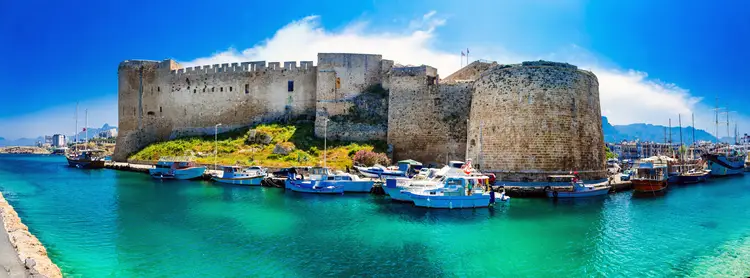
Northern Cyprus offers all the perks of a Mediterranean lifestyle for a much lower price. It boasts incredible castles, charming villages, and miles of untouched sandy beaches.
The island is found in the eastern corner of the Mediterranean and is blessed with year-round warm weather, clear blue waters, and over 400 miles of coastline.
English is so commonly spoken, you’d never have to learn the local language. The food is light and fresh—fish and salad served with every meal. The coffee is strong and aromatic, and locals are always ready to stop for one. The flowers that blossom across the valleys of the island give way to the mountains where you can ski in winter…
To top it off, life is as affordable as it gets in Europe—enjoy a healthy meal and a cold glass of wine for just 10 euros a person.
Northern Cyprus has all the ingredients for a dream retirement… but it also offers fantastic property investment opportunities. You can buy an ocean-view apartment at a beach resort from $110,000—real pocket-money beach property.
Kyrenia, on the north coast of Northern Cyprus, is known for its iconic views, with the Kyrenia Mountains to its back and the Mediterranean Sea to its front. It’s rich in historical wonders and steeped in legend, said to have been founded by two veterans of the Trojan War.
Kyrenia offers a low cost of living. As little as $1,500 per month is enough for a comfortable lifestyle for an expat couple. The low costs also apply to the price of real estate, which is a bargain relative to other areas of the Mediterranean and an excellent investment opportunity.
With its warm weather and abundant sunshine, Kyrenia has long drawn sun-seekers from the U.K. and Northern Europe. It’s still off the beaten path for North American retirees…. but if you’re up for an adventure and want to stretch your retirement budget or access a luxury standard of living at a low cost, Kyrenia should be on your list.
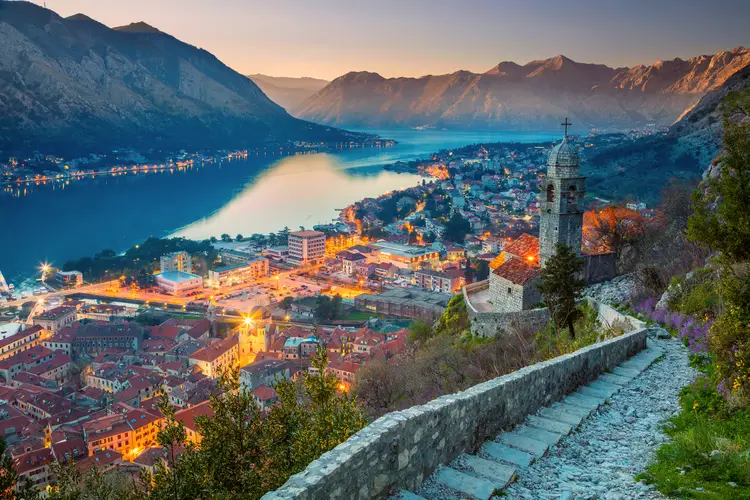
Montenegro is a tiny country—about the size of Connecticut—in Southeastern Europe. Despite its small size, pound for pound, it offers as much as any of Europe’s most beloved destinations.
The Telegraph says, “With beautiful beaches, magnificent mountains, epic lakes and cool cities, this country is a microcosm of the continent’s best bits.”
Montenegro has a beautiful coastline along the Adriatic as well as towering grey mountains, gorges, forests, rivers, and lakes. Here, you can ski in the morning and sunbathe at the beach in the afternoon. On any given day, you can boat, practice watersports, or just enjoy the view of the sparkling waters of the Adriatic.
Montenegro offers some of Europe’s most exciting investment opportunities. Property is affordable and can bring in strong rental yields. It also has a high potential for capital appreciation.
Also, Montenegro is widely expected to join the European Union in the next few years. If you buy property and establish residency or citizenship before then, Montenegro could become the fastest backdoor to an EU passport.
Along Montenegro’s Adriatic coast, you find Kotor Bay, a deep inlet that’s encircled by towering mountains. Sharp peaks meet the calm, crystal-clear waters of the sea, creating a fjord-like effect.
The bay boasts 57 miles (107 kms) of sparkling coastline. It’s so beautiful, it’s sometimes referred to as Europe’s secret riviera. Many liken its rugged landscape to Northern California, and it’s easy to see the similarities… The major difference, however, is that Kotor Bay is a fraction of the cost.
Kotor Bay offers a range of lifestyle opportunities, from the historical ambiance of Kotor Old Town—Europe’s best-preserved medieval village—to modern towns like Tivat to the upscale private residential communities, like Porto Montenegro.
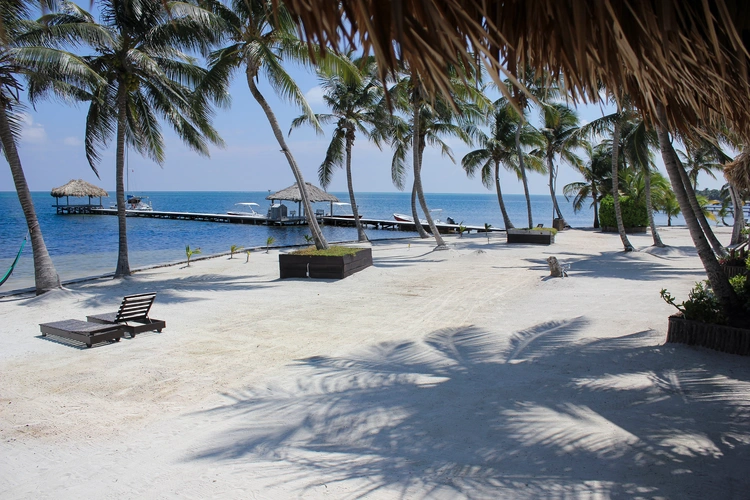
Belize is a country of natural wonders, with the second-largest coral reef in the world, geographic anomalies like the Great Blue Hole, Caribbean islands with white-sand beaches, as well as jungles, rivers, caves, and more.
It was once a stronghold for the Maya Empire. Today, it’s a highly popular expat destination that attracts those who seek a warm climate, an affordable cost of living, privacy, independence, and, above all, freedom. People live and let live in this unassuming little country.
Belize offers a range of lifestyle opportunities, from the Key West atmosphere on islands like Ambergris Caye and Caye Caulker to the wide-open spaces of the mainland in places like Cayo and Corozal.
Most importantly, Belize welcomes expats with open arms. The Qualified Retirement Program is one of the world’s premier retirement visas. It comes with perks, like tax-free importation of household goods, automobiles, boats, or even airplanes. Plus, Belize is a tax haven, imposing zero tax on foreign-sourced income.
Ambergris Caye is a slice of Caribbean heaven—perfect for retirees who seek a relaxing tropical lifestyle in the sun. Here, the stresses and worries of the rest of the world feel far away and unimportant. Instead, a laid-back atmosphere pervades…
At 26 miles long and 1 mile wide, Ambergris is Belize’s biggest island, found just offshore from the mainland. It’s surrounded by clean turquoise waters that invite you in for long swims and water sports—snorkeling, diving, boating, fishing, and more.
San Pedro is the main settlement and hub of activity on the island. This colorful, quirky little town combines local charm with modern conveniences. It’s also where the majority of Ambergris’ expat community is based. The island is a mini melting pot, home to people from Latin America, the States and Canada, Europe, Asia, the Middle East, and beyond.
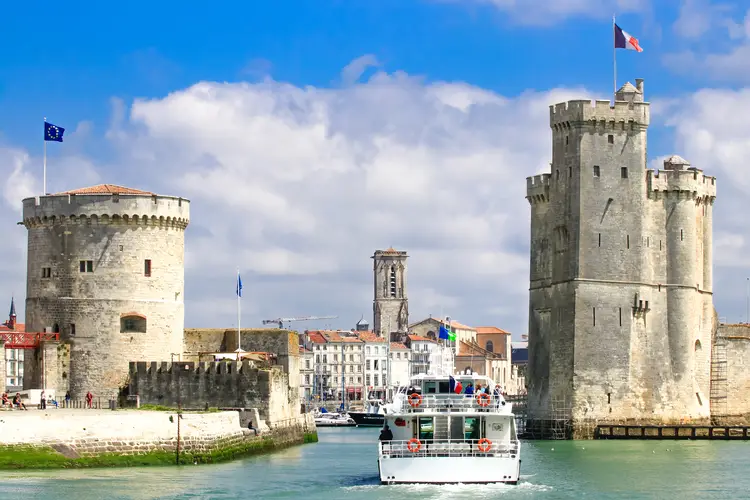
France is a fairy-tale land of romance, culinary excellence, delicious wine, and beautifully classic architecture.
Its iconic capital city is the world’s greatest open-air museum, a never-ending feast for your heart, your mind, your body, and your soul… But France is much more than Paris. This country also offers laid-back, rustic living in the countryside… outdoor mountain life in the French Alps… and glamorous, beachside lifestyles on the Côte d’Azur.
France is considered ground zero of refined Western culture. For access to the historic, architectural, and social heart of Western culture, there’s no better location.
La Rochelle is a medieval port town in southwestern France, just north of Bordeaux and about a three-hour train ride from Paris. A favorite holiday spot for the French, it’s said to have the third-highest quality of life in France.
La Rochelle is known for seafood and sunny weather. It’s nicknamed La Ville Blanche for its dazzling sunshine.
The day-to-day life here is vibrant and active. Most days see folks of all ages enjoying the salty sea air—grocery shopping at the historic market, playing cards or board games in the park, taking a bike ride, hitting the beach, or simply enjoying a crisp glass of local white wine next to the harbor.
This laid-back city offers a wealth of history, an active arts scene, and fabulous shopping prospects, and it’s not an expensive place to live. This is a real city with plenty to see and do, but it’s got the feel of a small town.
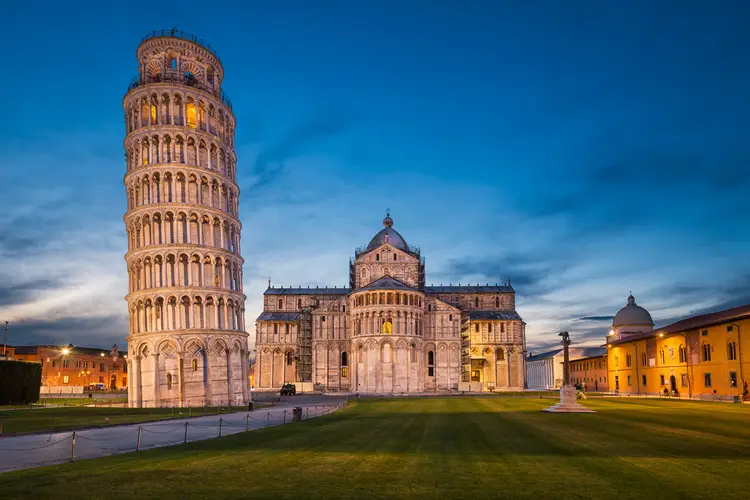
For lovers of culture, food, wine, and the beauty of the old world, there are few better places than Italy. This popular European destination is a haven for expats searching for a dreamy, sunshine-filled retirement.
Italy is also a land of iconic landscapes beyond its book-like shape. It boasts over 4,700 miles of coastline, including world-famous stretches like the Amalfi Coast and sun-kissed islands, like Sardinia. It has the rolling hills of Tuscany, Lake Garda, Lake Como, and other stunning lakes, as well as dazzling peaks, from the Dolomites to the Alps to the Apennines.
The Italian lifestyle is laid-back and light in stress, with a heavy emphasis on family. In small towns, life can be surprisingly affordable for North American retirees.
Pisa is a vibrant city nestled in the heart of Tuscany that offers history and culture combined with the conveniences of modern living. If you’re considering a move to Italy, you should put this highly liveable, underrated city on your radar.
Pisa is rich in historical and architectural heritage, a delight for leisurely strolls with landmarks around every corner.
Narrow medieval streets spill out onto vibrant piazzas where people gather to socialize, enjoy meals, or chat over coffee.
Pisa is a small city of about 90,000 people, with a youthful buzz thanks to the high proportion of students that come here to study. It strikes the ideal balance between a village atmosphere and an urban one.
Free Report:
10 Best Places To Retire In 2025

Simply sign up to receive the FREE daily e-letter, Overseas Opportunity Letter, and we’ll immediately email you our editors’ latest research report… absolutely FREE
We Value Your Privacy! We will not share your email address with anyone else, period.
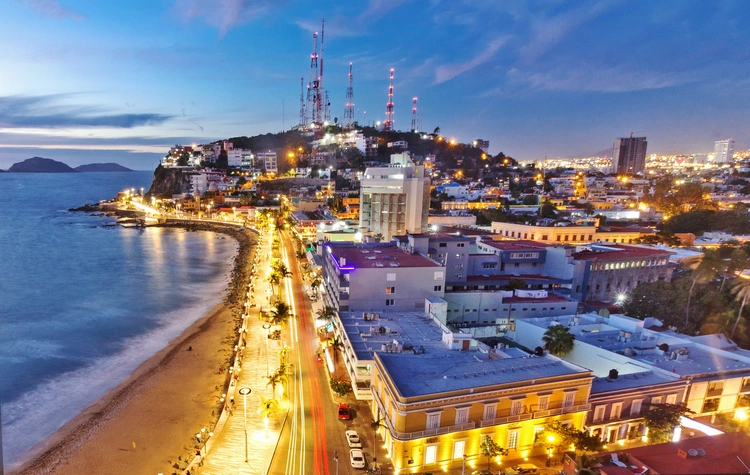
Over the past four decades, Americans and Canadians have voted Mexico the world’s number one place to enjoy expat life in the way that really counts. They’ve packed up and moved there.
This country is home to more expats from up north than any other—at least one million or as many as two million, depending on who’s counting. These big numbers shouldn’t surprise anyone. Mexico is familiar and close to the States and Canada, making for an easy transition to expat life.
Mexico provides the three main things that expats seek: warm weather, beautiful beaches, and a low cost of living. It’s a massive country with two long coasts, mountains, and colonial cities, meaning a variety of lifestyle options are available.
For affordable coastal living in Mexico, Mazatlán can’t be beat. Often called “The Pearl of the Pacific,” Mazatlán’s top selling point is its 13 miles of golden beaches with clean, swimmable waters. The beaches are lined by a vibrant boardwalk known as the Malecón, one of the longest seaside promenades in the world.
Mazatlán boasts a sizeable historic district known as the Centro Histórico that is full of charming Spanish-colonial architecture, cobblestone streets, and lively plazas.
It’s more authentic and more affordable than its resort-town counterparts like Cancún, Tulum, Playa del Carmen, and Puerto Vallarta. This applies not only to the day-to-day cost of living but also the cost of high-quality seaside real estate as well.
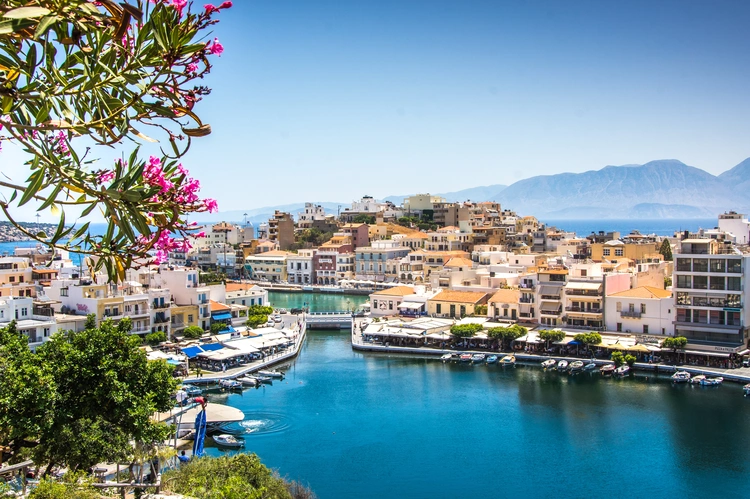
Located at the crossroads of Asia, Africa, and Europe, Greece’s history is long and storied. If you’re seeking to ground yourself through a connection to the past, you won’t find a better base than Greece.
Greece is also a dream destination for beach lovers. Greece’s geography features mountains, gorges, peninsulas, inlets, and thousands of islands. It’s lapped by the pristine blue waters of the Mediterranean Sea.
It’s the southernmost country in Europe, with a mild climate and some of the sunniest weather anywhere on earth. If your interests include lazing on the beach, basking in the sun, scuba diving, island-hopping by boat, or splashing around in the sea, Greece is ideal.
The biggest island in Greece and the fifth biggest in the Mediterranean, Crete offers more lifestyle options than your typical island… from cities like Chania and Heraklion to untouched wilderness, beach towns to snow-capped mountains, and ancient olive groves to mountain villages.
Crete’s historical roots go deep. It was home to Europe’s first advanced civilization, the Minoans, and it has sat at the crossroads of civilizations for millennia. Evidence of this rich history is found across the island.
Chania, a city on the island’s northwest coast, is a microcosm of that history. We think Chania is the best choice for expats on Crete. Chania Old Town is a labyrinth of homes, museums, boutiques, restaurants, bars, and ancient churches, partly encircled by the ancient city walls.
Crete has the highest number of sunshine hours per year in all of Greece. Much of Crete falls under a hot-summer Mediterranean climate, with hot summers and mild winters.
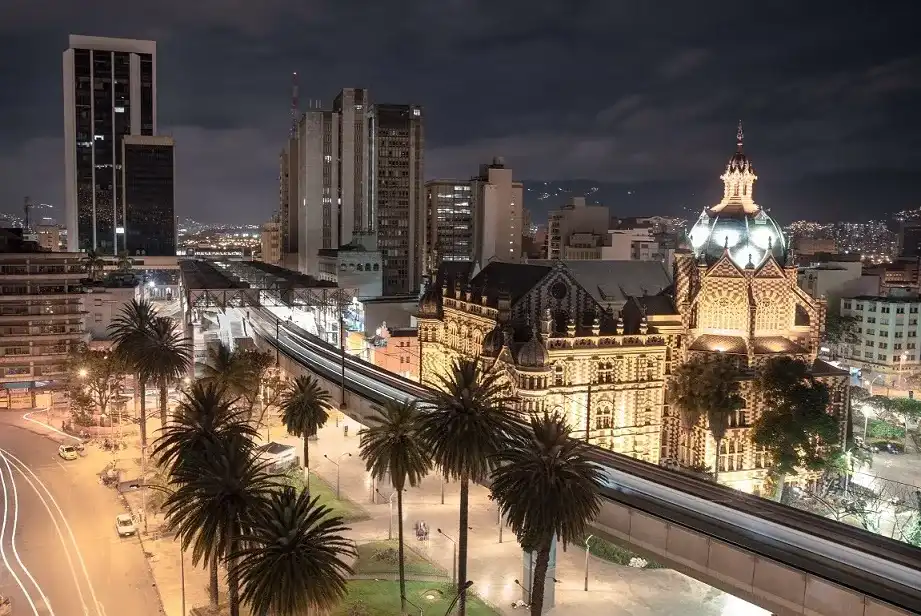
Colombia is quietly becoming one of the world’s top overseas havens. From capital Bogotá to Euro-chic Medellín to colonial Cartagena on the Caribbean, expats are drawn by the vibrant culture, low cost of living, and high quality of life.
Colombia is one of the easiest places we know to establish residency. A variety of visa options are available, including options for retirees, investors, and people of independent means, and the process of applying takes just a couple of hours.
Infrastructure is strong across the country, and the standard of health care is high. Eight of the top 35 hospitals in all of Latin America are in Medellín. Other cities in Colombia have similarly top-standard facilities.
Medellín is extremely livable thanks to its efficient public transportation system, friendly locals, ample green spaces, and weather that most people would describe as perfect. It’s never too cold or too hot, so utility bills stay low because you don’t need to heat or cool your home.
Its varied cosmopolitan offerings almost put it on par with the world’s top metropolises… However, unlike comparable destinations, life in Medellín is inexpensive, particularly for American retirees.
Medellín is famous for its colorful culture and vibrant energy. Expats can enjoy a world-renowned flower festival, the International Jazz Festival, and the International Tango and World Latin Dance Festivals, and more.
There are museums all over town, there’s opera in season, as well as symphonies, theater, orchestra performances, and major concerts. There’s great shopping, dance clubs, nightclubs (even for the silver-haired crowd), and fine dining. It’s impossible to be bored in Medellín.
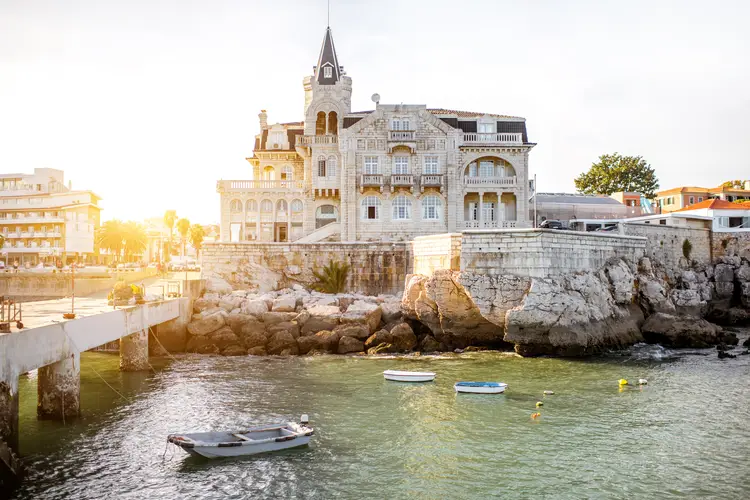
It’s easy to understand why Portugal has become one of the most sought-after expat destinations in the world…
It has a low cost of living and user-friendly residency options. It also has great food, abundant sunshine, some of the best beaches and golf in Europe, excellent infrastructure, and a large English-speaking population.
Portugal has a mild, almost Mediterranean climate with over 300 days of sunshine per year, allowing people who live here to maximize and enjoy their time spent outdoors. It’s well connected, making it a great base from which to explore the rest of the Continent.
Once a sleepy fishing village, Cascais became a sunny playground for Lisbon socialites. Today, it’s a magnet for international expats seeking a safe, high-quality lifestyle overseas.
The lifestyle in Cascais is laid-back yet vibrant. It sits on a stunning stretch of Atlantic coastline and offers golden beaches, which are the main draw for many.
In town, there’s a mix of historical features—cobblestone streets, historic architecture, etc.—and modern amenities, like trendy cafés and restaurants.
Cascais offers innumerable amenities, fantastic restaurants, tons of culture, gorgeous scenery, and more. For anything that you can’t get in Cascais, Lisbon is only 30 minutes away and easily reached by train.
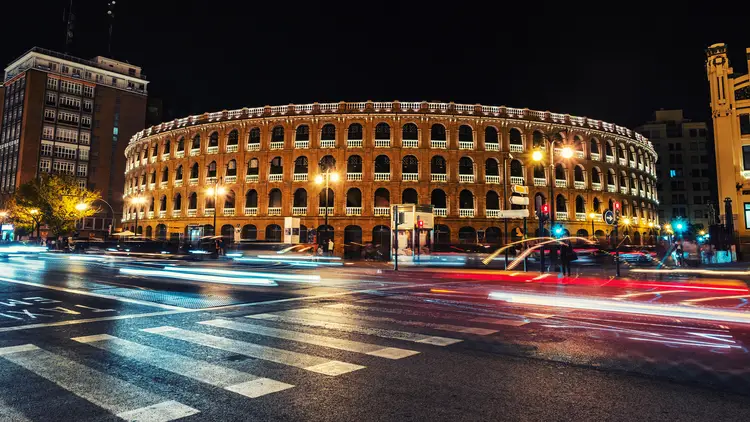
The best place to retire in 2025 is in Spain…
From tapas and flamenco to beaches, bullfighting, siestas, and language, few countries have such widespread global acclaim as Spain. But, while you may think you know this country, there’s much beneath Spain’s surface to be discovered…
The country boasts rich heritage, beautiful landscapes, delicious cuisine, and vibrant festivals and celebrations. It’s an all-around fantastic place to spend time.
For these reasons, plus its affordable costs of living, diverse lifestyle opportunities, excellent health care, and safe, welcoming communities, Spain is one of the world’s most established expat havens.
Once again, we crown Valencia the #1 Best Place To Retire In The World. This sun-soaked city on Spain’s Mediterranean coast offers an unparalleled quality of life surrounded by beauty, cultural richness, and community.
Valencia’s unique blend of attributes is simply too appealing for it to be topped in 2025. It’s a vibrant, exciting city with endless things to see and do…
It has golden-sand beaches with bright Mediterranean waters and warm, sunny weather year-round. Its infrastructure is excellent, including its public transportation system and health care facilities…
Above all, it’s safe, affordable, and friendly, with a welcoming community of locals and expats from around the world…
Valencia offers everything an expat could want, but it’s not just us at Live And Invest Overseas who recognize its incredible value.
Also, it took the top spot in InterNations’ 2024 Quality of Life index, as well as its Personal Finance and Best Cities rankings. The European Commission named it the European Green Capital for 2024. And it came out as Europe’s Best City in Condé Nast Traveler’s 2024 Readers’ Choice Awards.
Valencia has gained significant attention for its sustainability, innovation, and overall quality of life, and the list of accolades and honors awarded to it is endless.
Free Report:
10 Best Places To Retire In 2025

Simply sign up to receive the FREE daily e-letter, Overseas Opportunity Letter, and we’ll immediately email you our editors’ latest research report… absolutely FREE
We Value Your Privacy! We will not share your email address with anyone else, period.

Kathleen is the Live and Invest Overseas Founding Publisher. She has more than 30 years of hands-on experience traveling, living, and buying property around the world.
Free Report:
10 Best Places To Retire In 2025

Simply sign up to receive the FREE daily e-letter, Overseas Opportunity Letter, and we’ll immediately email you our editors’ latest research report… absolutely FREE
We Value Your Privacy! We will not share your email address with anyone else, period.

The 10 Best Places To
Retire in 2025
plus: a special bonus destination
Simply sign up to receive the FREE daily e-letter, Overseas Opportunity Letter, and we’ll immediately email you our editors’ latest report absolutely FREE!
Among the top reasons are lower living costs, decreased taxes, a more easygoing and healthier lifestyle, and affordable quality health care options.
After more than three decades of experience considering the whole world in this context, we have some good ideas about where makes sense generally for a high quality of retirement life… where probably doesn’t… and why.
It is in that spirit that, each year, that we publish the Overseas Retirement Index. A concise guide to the best places to retire…
Here are some of the top locations to consider when searching for the best places to retire overseas in 2025.
1. Spain
2. Portugal
3. Colombia
4. Greece
5. Mexico
6. Italy
7. France
8. Belize
9. Montenegro
10. Northern Cyprus
In the category of crime and safety, it’s no surprise that Portugal is at the top of nearly everyone’s list.
Most of the index havens are safer than the United States…
This is the probably the most frequently asked question we get, year-in and year-out.
As ever, the answer is “it depends on you”. To find out, imagine your ideal lifestyle and make a list of what you want from your new life.
Then look at the numbers in that context. Where will your budget allow you to buy the lifestyle you’re looking for?
The important thing to remember when thinking about your retirement is, don’t compromise.
Don’t tell yourself you can live without the things you love. And, if the place you had in mind doesn’t fit with your ideal lifestyle, keep looking.
Be honest with yourself and move for the right reasons to a place where you will be happy.
Both Spain and Greece are excellent choices when looking for a safe and affordable place to retire.
Also, Spain offers a high standard of living and, of course, it’s also a safe country. We recommend Valencia, where the average cost of living is 49% cheaper than the cost of living in the United States.
For instance, Portugal is also a good option – it has a low cost of living and a high standard of living. It’s also a safe country, and it has a variety of cultural attractions to offer retirees.
Investing in Cyprus: At the far eastern edge of the Mediterranean, you’ll find an island that has dazzled mankind for...
Living in Panama: Panama is a land of mesmerizing natural beauty, vibrant folklore and traditions, and a diversity of lifestyle...
The feature for this month’s issue of Europe Uncovered was written up by my colleague Sophia Titley, our real estate...
Should you really be thinking about retiring to a new country? That is... who should consider this idea? Surely it's...


We Value Your Privacy! We will not share your email address with anyone else, period.
As seen in

© 2008 – Live and Invest Overseas™ – All Rights Reserved.
Sign up for FREE and learn how to live the good life on a modest budget, find bargain property, and more. Plus, check out our free report on the 10 BEST PLACES TO RETIRE.
RETIRE OVERSEAS AND LIVE LIKE ROYALTY
Sign up to receive the FREE daily e-letter, Overseas Opportunity Letter and we’ll immediately email you our editors’ latest research report…
BEST PLACES TO RETIRE
FREE REPORT:
Top Countries
Budgets
Affordable
Resources
Real Estate
Overseas Property Alert
How To Become Independently Wealthy And Fund The Lifestyle Of Your Dreams
Buying Real Estate For Cashflow
Discover tips and strategies used by global property investing veterans
Explore Our Latest Posts
Learn how to invest and purchase property abroad…
Conferences
Live and Invest In Spain Conference
Offshore Wealth Summit
GREECE WORKSHOP
Contact Our Events Team:
Toll-Free U.S. and Canada:
1 (888) 627 8834
From Outside North America:
1 (443) 599 1221
Working Hours
Monday – Friday 08:00 am – 17:00 pm EST.
Reach us with your questions by email at: events@liveandinvestoverseas.com
Store
Overseas Havens Reports
Conference Kits
Lahardan Books
Services
Free Report
THE 10 BEST PLACES TO RETIRE IN 2025

Sign up to receive the FREE daily e-letter, Overseas Opportunity Letter and we’ll immediately email you our editors’ latest research report…
We Value Your Privacy! We will not share your email address with anyone else, period.
Follow Us:
© 2008 - Live and Invest Overseas - All Rights Reserved.